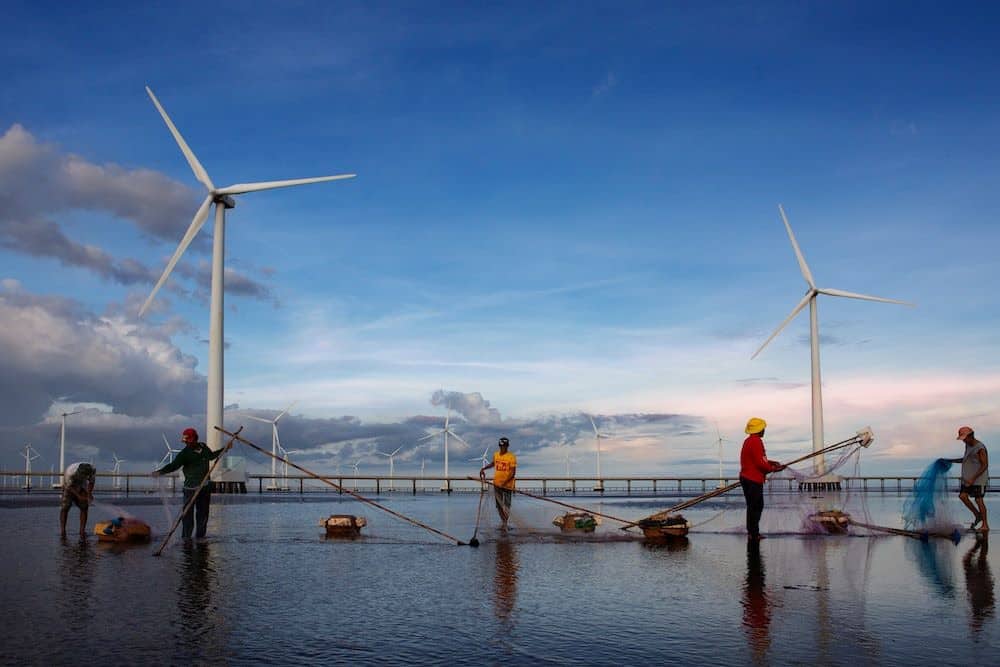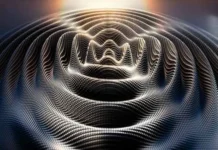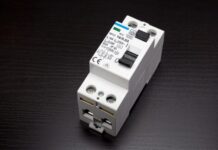Do you need information on how to generate electricity? Then, read through this article for detailed explanations of the different methods of generating electricity and other related information on electrical supply systems.
This article discusses various methods of generating electricity in bulk (for commercial use) and for domestic use. Even so, you will get an explanation of how electricity works.
For easy reading, I will present this article in sections with an overview of electricity at the beginning. After which, I will explain how electricity works.
Subsequently, the next section will contain the various methods of generating electricity. For example, this section will discuss hydroelectricity, wind turbines, photovoltaic panels, etc.
Furthermore, I will discuss the transmission, distribution, and utilization of electricity. These are the other stages electricity goes through after generation.
Then, the next section will contain the pros and cons of electricity. After this, the next section will contain answers to frequently asked questions on how to generate electricity.
Lastly, I will conclude with my final thoughts.
How To Generate Electricity: Overview

In our modern society, electricity plays a vital role in making life easier. For example, most of our home appliances use electricity to operate.
However, this electricity comes in two forms: direct or alternating, depending on the source. Thus, electricity is the continuous flow of electric current through conductors that create a path called an electric circuit.
There are two types of electric circuits, depending on the current flowing through them. These are direct current (DC) circuits and alternating current (AC) circuits.
A direct current (DC) is the flow of electrical charges in one direction. They are derived from sources like batteries, solar panels, rectifiers, etc.
On the other hand, alternating current (AC) is the flow of electric charges in a way that changes direction periodically according to the frequency of the source of supply. You can derive alternating currents from generators, inverters, etc.
Alternatively, you can also describe electricity as the buildup of stationary electrical charges due to the imbalance of charges within or on the surface of a material or between materials.
These charges remain there until they move through a conductor as electric current.
Therefore, electricity is a phenomenon that involves stationary electric charges or the flow of electric charges through a conductor.
These charges flow from the point of higher concentration (positive polarity) to the lower concentration (negative polarity).
Now we know what electricity is and its forms. Let us see how it works, depending on its form.
How Electricity Works

Electricity exists in two forms: either stationary or in motion. When electricity is stationary (stationary charges), it is referred to as static electricity, and when the charges are in motion, it is an electric current.
This section will discuss how electricity works as stationary charges and as electric current.
Static electricity exists due to an imbalance between positive and negative charges in objects. It is the build-up of electric charge (negative or positive) in a single location.
These charges are built up on the surface until they find a way to be discharged or released. This is why they are called electricity at rest, and one way to discharge them is through an electric circuit.
However, a way of creating charges on a material is by rubbing it with another material. This will transfer negative charges (electrons), called Triboelectric Effect.
More so, an electric charge could either be positive or negative and is a property of matter which causes two electrical charges to repel or attract, according to the law of electrostatics.
On the other hand, electric current is the flow of electric charges through a circuit. So it is a way of discharging static electricity.
Furthermore, electric current flows through conductors with both ends of the conductor connected to a potential difference.
This will cause current to flow from the positive terminal (live, for AC) of the negative terminal (neutral, for AC) through the conductor.
In addition, varying magnetic fields can induce electrical changes in a conductor. This is called electromagnetic induction.
Generally, electric current is more applicable to our daily lives than static electricity. Hence, this article will focus on how to generate electric current.
How To Generate Electricity: Methods

There are several methods of generating electricity, depending on the resources available, the purpose, and the amount of energy needed.
For example, you could generate electricity for your personal use or commercial purposes.
Furthermore, the resources available also determine the method of electricity generation. These resources could be water, wind, fuel, sun, etc.
However, you will need to convert one natural form of energy directly to electricity or through another form of energy.
Hence, to generate electricity, you must obey the law of conservation of energy, which states that “energy can neither be created nor destroyed, but can be transformed from one form to another.”
For commercial purposes, electricity is generated in a power plant. Most of these power plants use turbines.
A turbine is a mechanical device mostly propelled by a fluid or gas. It converts other forms of energy to mechanical energy by allowing them to rest on the turbine blades to cause a rotary motion.
Below are the methods of generating electricity.
Hydroelectricity
Hydroelectricity is a method of generating electricity using the energy from running water. The generation of electricity with the energy of running water is done in a hydroelectric power plant.
A hydroelectric power plant consists of a dam, turbine, and generator. Although, there are other parts of the hydroelectric power plant like the penstock, powerhouse, tail race, etc.
Furthermore, the dam is a structure built across a river to obstruct the flow of water to achieve a high water potential and to serve as a reservoir.
When the water falls from the high potential on the turbine blades through the penstock, it creates a spinning effect on the turbine.
As a result, the turbine converts the energy from the falling water to mechanical energy. This energy is transmitted to the alternator in the powerhouse through a shaft.
Finally, the alternator converts the mechanical energy from the turbine to electrical energy.
This method generates alternating current electricity for domestic or commercial purposes, depending on the size of the plant.
Then, the water from the penstock flows out of the turbine chambers through the tail race back to the river.
Wind Turbines
The wind turbine is another way of generating electricity using wind energy. This power plant uses windmills which act like turbines to harness wind energy to generate electricity.
Furthermore, the rotating blades of the windmill are connected to a generator and transfer the mechanical energy from the windmill to the generator.
The generator converts the mechanical energy to electricity.
Coal
The first step of generating electricity with coal is grounding the coal blocks evenly to fine fragments and placing them in a furnace attached to a water boiler.
In addition, the water in the water boiler undergoes heating and combustion to produce steam. This steam is used to drive turbines to generate electricity.
Biomass
Biomass is renewable organic material that comes from plants and animals. Examples of biomass are animal dung, wood chips, branches and leaves of plants, organic waste materials, decaying animal mass, etc.
When you burn these materials or make them undergo combustion, they produce a high amount of heat that can be used to generate electricity.
Therefore, biomass is a very good source of renewable energy, and its use for generating electricity is increasing steadily.
Geothermal Energy
This is a form of energy that the Earth stores beneath itself. The interior of the Earth stores a great amount of heat, which is transferred to the crustal portions of the Earth.
However, when you inject cold water and other fluids, it generates trapped steam and is used to power turbines to generate electricity.
Photovoltaic Panels
Photovoltaic panels, also known as solar panels, are photovoltaic devices that can convert solar energy (sunlight) into electricity (direct current, DC).
These panels consist of photovoltaic cells that are connected.
Each of these cells consists of two silicon semiconductors sandwiched together to form two layers.
The upper layer is a heavily doped N-type semiconductor, and the lower layer is a lightly doped P-type semiconductor.
Furthermore, these semiconductors create an electrostatic field between them.
This electrostatic field is due to the force of attraction between the semiconductors.
When the particles of sunlight rest on the upper layer of the photovoltaic cell, they displace electrons.
These electrons flow toward the lower layer but the electric field diverts, allowing them to flow in one direction toward the cell’s output.
This process continues as long as there is sunlight resting on the solar panel.
However, we use alternating current (AC) mostly in our homes. Therefore, you need an inverter to convert the direct current from the solar panels to an alternating current.
You can use this method to generate electricity for both domestic and commercial purposes.
For commercial purposes, you will need solar reflectors to concentrate the heat from the sun within a point.
Portable Generators
A portable generator is an electromechanical device that operates with fuel to generate electricity. This device generates electricity for domestic use only.
It contains electrical, mechanical, and chemical sections in one unit.
However, some generators have these sections in separate units, depending on the size of the generator and the power it supplies to the load.
Batteries
A battery is an electrochemical device that directly converts chemical energy to electrical energy. It is also a device that stores electrical charges for future purposes.
Most solar power installations use batteries to store electricity when there is sunlight and use the stored energy at night when there is no sunlight. This device operates with a direct current.
Hence, you will need an inverter to derive an alternating current from it. Other devices, like flashlights, phones, laptops, etc., use electricity from batteries.
You can also generate electricity from nuclear fission, tidal energy, diesel power plants, etc.
How To Generate Electricity: Transmission, Distribution, And Utilization Of Electricity

Transmission Of Electricity
The transmission of electricity is necessary for commercial and industrial purposes.
In other words, you only need a transmission system if you intend to connect the electricity you generate to the electrical grid.
The electrical grid is a network of cables that take electrical power from the generation station to the consumers.
You need to generate electricity in bulk for commercial purposes. Thus, you will need a location where you can get enough energy sources.
Generally, power plants are located far from the load center (consumers), and the electricity generated at the plant can not travel a long distance to the consumers.
Thus, there is a need to increase the voltage of the generated electricity to reduce losses.
Therefore, utility companies increase the generation voltage. This will reduce the electrical power’s current, reducing the I2R losses along the line.
As a result, this will allow the electricity to travel a very long distance at high voltage to the cities where the consumers reside.
The conductors that carry this high transmission voltage are called transmission lines.
The transmission lines carry voltages of 66KV to 765KV. Also, these transmission lines travel on towers over a long distance.
Distribution Of Electricity
When the high voltage of the transmission line gets to the cities, the utility companies bring down the voltage to a lower and safer magnitude.
Then, they distribute the electricity to various parts of the cities on poles.
The voltages on distribution lines are 110 volts to 13 kilovolts.
Utilization Of Electricity
This is the final stage of the electrical grid. Consumers connect their homes to the electrical supply system through service cables at this stage.
However, these cables connect to an energy meter that reads the amount of electricity that the consumer uses in a month.
This determines the user’s electrical bill at the end of the month.
How To Generate Electricity: Substations

An electrical substation is an assembly of apparatus or equipment to alter or change some parameters in an electrical supply system.
It is a structure that steps up or down voltage, corrects power factor, etc., depending on the substation type.
The major equipment of a substation is the transformer. A transformer is a stationary device that operates with the principle of electromagnetic induction.
Utility companies use it to step up or down the voltage in an electrical supply system.
Before transmitting electricity, utility companies use a step-up transformer to increase the supply voltage of the electrical power.
Accordingly, a step-down transformer steps down the supply voltage before distributing it within the city.
Other devices in an electrical substation include reactors, relays, conductors carrying electricity in and out of the substation, feeders, circuit breakers, etc.
Pros And Cons Of Electricity

Electricity has a lot of advantages and a few disadvantages. However, some of the advantages and disadvantages are below:
Pros
- Sources of electricity are renewable.
- Its maintenance cost is relatively low.
- Also, it is safe, clean, and a convenient source of energy.
- Even so, you can set up electricity in many sizes.
- In addition, electricity is efficient.
- More so, it reduces greenhouse emissions.
- Lastly, electrical stations can operate for a long period.
Cons
- It is expensive to construct.
- Also, the process of erecting sources of electricity sometimes messes up wildlife.
- Even so, it is dependent on precipitation.
- Electricity is more expensive than gasoline.
- More so, the construction of dams causes the loss of fish species.
- Electric vehicles are not completely emission-free.
How To Generate Electricity: Frequently Asked Questions

The following are examples of energy sources
Hydropower.
Geothermal Energy.
Solar Energy.
Wind Energy.
Tidal Energy.
Nuclear Energy.
Biofuel Energy.
Wind, solar, and micro-hydro are the main methods of producing off-grid power.
Yes.
It is technically possible to run solar off-grid. However, it is weather dependent.
Yes.
Magnets produce magnetic fields that can generate electricity.
Solar radiation.
It could generate electricity up to 100 kilowatts.
An electric generator is a device that produces an electric current.
It is expensive to install renewable energy systems.
The average requirement for electricity is 29.33 kWh per day. Also, a solar panel generates about 1.8 kWh of electricity daily. Thus, you will need 17 solar panels.
Off-grid batteries can last between 5 and 15 years.
How To Generate Electricity: My Final Thoughts

The role of electricity in over daily lives is obvious. All our electronic devices and electrical appliances operate with electricity.
However, some electricity has very little knowledge of how to generate electricity, which this article has done justice to that.
The method of generating electricity in a particular area depends on the energy available.
Although the cost of building power plants is high, the electricity the power plants generate is highly beneficial.
I hope you found this article helpful.
Then, fill out the “Leave A Reply” form to share your thoughts.
Read More From Us
How To Install A Transfer Switch For A Generator
What Is Electric Fuse: An Electrical Safety Device
Electric Unicycle Explained: The Best Alternate Transport System




